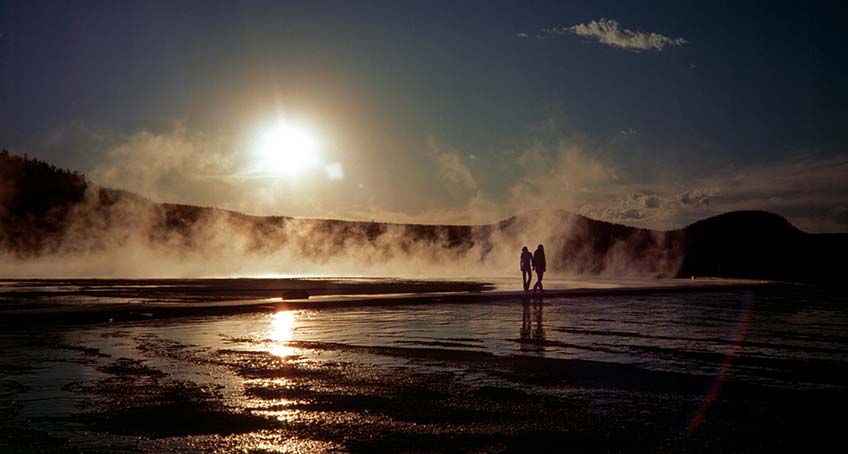Geothermal Electricity Production Basics
Geothermal power plants use steam to produce electricity. The steam comes from reservoirs of hot water found a few miles or more below the Earth's surface.

Flash steam power plant with bottoming binary unit in Nevada. Photo by Dennis Schroeder, NREL
The steam rotates a turbine that activates a generator, which produces electricity. There are three types of geothermal power plants: dry steam, flash steam, and binary cycle.
Dry Steam
Dry steam power plants draw from underground resources of steam. The steam is piped directly from underground wells to the power plant where it is directed into a turbine/generator unit. There are only two known underground resources of steam in the United States:
- The Geysers in northern California
- Yellowstone National Park in Wyoming, where there's a well-known geyser called Old Faithful.
The only dry steam plants in the country are at The Geysers.
Flash Steam
Flash steam power plants use geothermal reservoirs of water with temperatures greater than 360°F (182°C). This very hot water flows up through wells in the ground under its own pressure. As it flows upward, the pressure decreases and some of the hot water boils into steam. The steam is then separated from the water and used to power a turbine/generator. Any leftover water and condensed steam are injected back into the reservoir.
Binary Cycle
Binary cycle power plants operate on water at lower temperatures of about 225–360°F (107–182°C). Binary cycle plants use the heat from the hot water to boil a working fluid, usually an organic compound with a low boiling point. The working fluid is vaporized in a heat exchanger and used to turn a turbine. The water is then injected back into the ground to be reheated. The water and the working fluid are kept separated during the whole process.
Currently, two types of geothermal resources can be used in binary cycle power plants to generate electricity: enhanced geothermal systems as well as low-temperature and co-produced resources.
Enhanced Geothermal Systems
Enhanced geothermal systems provide geothermal power by tapping into the Earth's deep geothermal resources that are otherwise not economical due to lack of water, location, or rock type. The U.S. Geological Survey estimates that potentially 500,000 megawatts of geothermal resources are available in the western United States using enhanced geothermal systems or about half of the current installed electric power generating capacity in the nation.
Low-Temperature and Coproduced Resources
Low-temperature and coproduced geothermal resources are typically found at temperatures of 300°F (150°C) or less. Some low-temperature resources can be harnessed to generate electricity using binary cycle technology. Coproduced hot water is a byproduct of oil and gas wells in the United States. This hot water is being examined for its potential to produce electricity.
Additional Resources
Geothermal Electricity Generation (U.S. Department of Energy)
Low-Temperature and Coproduced Resources (U.S. Department of Energy)
Enhanced Geothermal Systems (U.S. Department of Energy)
Share
Last Updated Aug. 27, 2025
